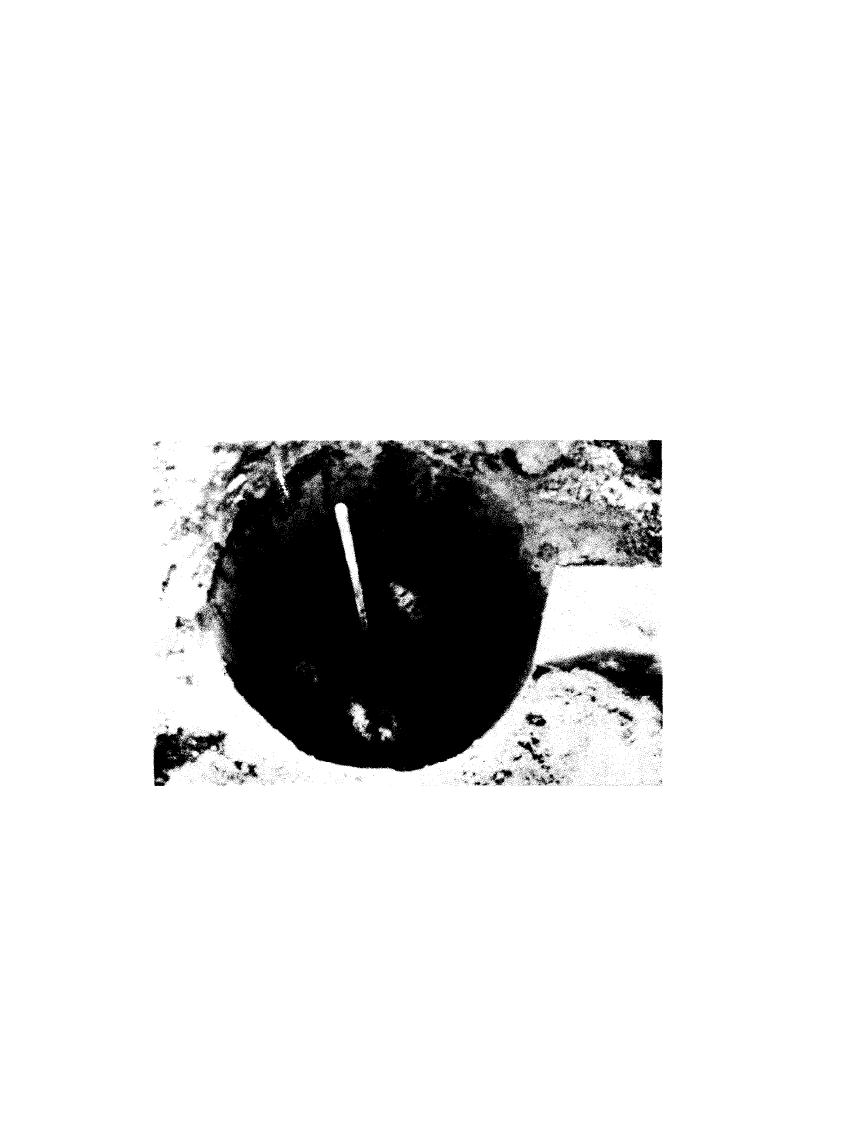

Custom Search
|
|

|
||
 MIL-HDBK-419A
The backfill can be prepared by mixing salt and local soil or by saturating the soil backfill with a salt-water
solution as shown in Figure 2-31. Backfill other than soil can also be used because soil is not always easily
recovered from some drilled or blasted holes and because unfrozen material is difficult to find during the
winter. Absorbent paper saturated with a salt solution and compacted in the hole around the electrode can also
be used as a soil substitute.
The amount of salt added to the backfill is determined by preliminary laboratory conductivity measurements of
several salt-soil mixtures. Salt may be added to silt and to a fine sand to obtain mixtures of from 0 to 20% salt
based on the weight of the air-dried soil. Distilled water can be added to the salt-soil mixtures to obtain
several soil moisture levels up to saturation for both materials. The soils should be compacted into a cylindrical
plexiglass ring, which is clamped between electrodes for resistivity measurements at 1 kHz. Figure 2-32 shows
the resistivity for two soils as a function of salt concentration at several volumetric moisture contents. A salt-
soil mixture containing 1% salt results in a dramatic decrease in resistivity, with little effect after 5% salt for
most moisture levels. Therefore, a 5% salt by weight is recommended for backfill as it produces a very
conductive salt-soil mixture with the least amount of salt.
Figure 2-31. Installation of an Electrode During the Process of Backfilling with a Salt-Soil Mixture
Salt solution may also be poured around shallow-driven horizontal electrodes to minimize contact resistance
during freezeback. These salt solutions in general may have concentrations on the order of 50-100%.
Figure 2-33 shows a configuration of such horizontal electrodes placed in a thawed active layer.
Curves showing resistance-to-ground for metallic electrodes having various backfills are shown in Figures 2-34
through 2-38. Large seasonal variations are noted in electrode performance due to variations in unfrozen water
content in both thawed and frozen materials. In some situations the improvement in grounding conditions
during thaw periods can be extended by use of conductive backfill. The lower freezing point of the backfill will
also reduce electrode contact resistance caused by freezing around the metallic electrodes.
2-72
|
 
|
|
 |
||